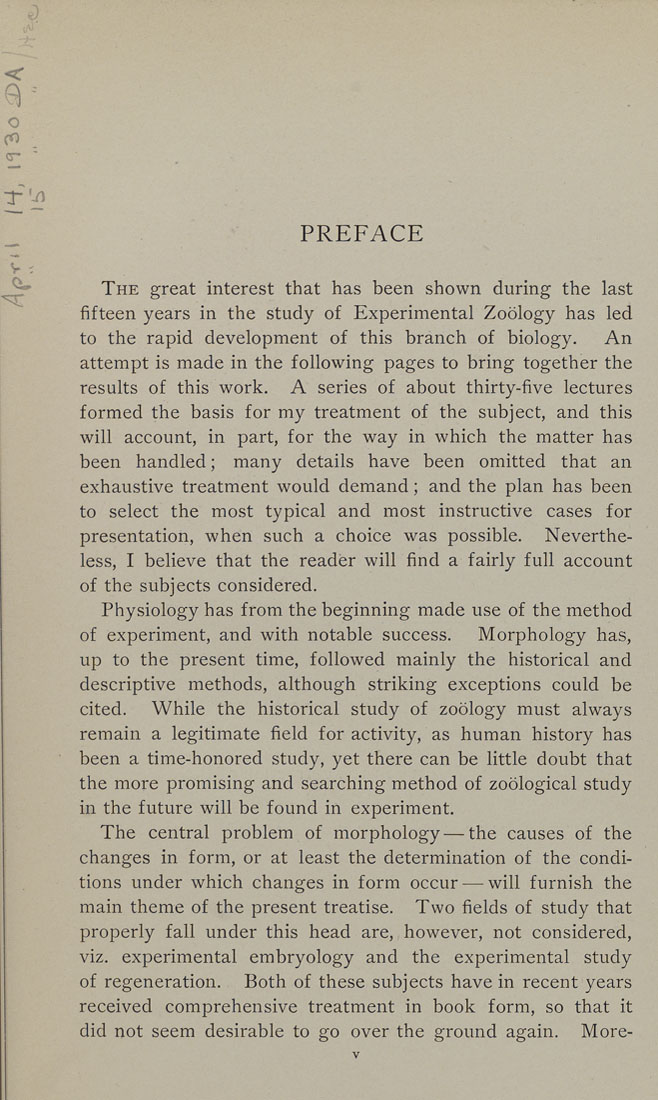PREFACE
The great interest that has been shown during the last
fifteen years in the study of Experimental Zoology has led
to the rapid development of this branch of biology. An
attempt is made in the following pages to bring together the
results of this work. A series of about thirty-five lectures
formed the basis for my treatment of the subject, and this
will account, in part, for the way in which the matter has
been handled; many details have been omitted that an
exhaustive treatment would demand; and the plan has been
to select the most typical and most instructive cases for
presentation, when such a choice was possible. Neverthe¬
less, I believe that the reader will find a fairly full account
of the subjects considered.
Physiology has from the beginning made use of the method
of experiment, and with notable success. Morphology has,
up to the present time, followed mainly the historical and
descriptive methods, although striking exceptions could be
cited. While the historical study of zoology must always
remain a legitimate field for activity, as human history has
been a time-honored study, yet there can be little doubt that
the more promising and searching method of zoological study
in the future will be found in experiment.
The central problem of morphology—the causes of the
changes in form, or at least the determination of the condi¬
tions under which changes in form occur — will furnish the
main theme of the present treatise. Two fields of study that
properly fall under this head are, however, not considered,
viz. experimental embryology and the experimental study
of regeneration. Both of these subjects have in recent years
received comprehensive treatment in book form, so that it
did not seem desirable to go over the ground again. More-
|








